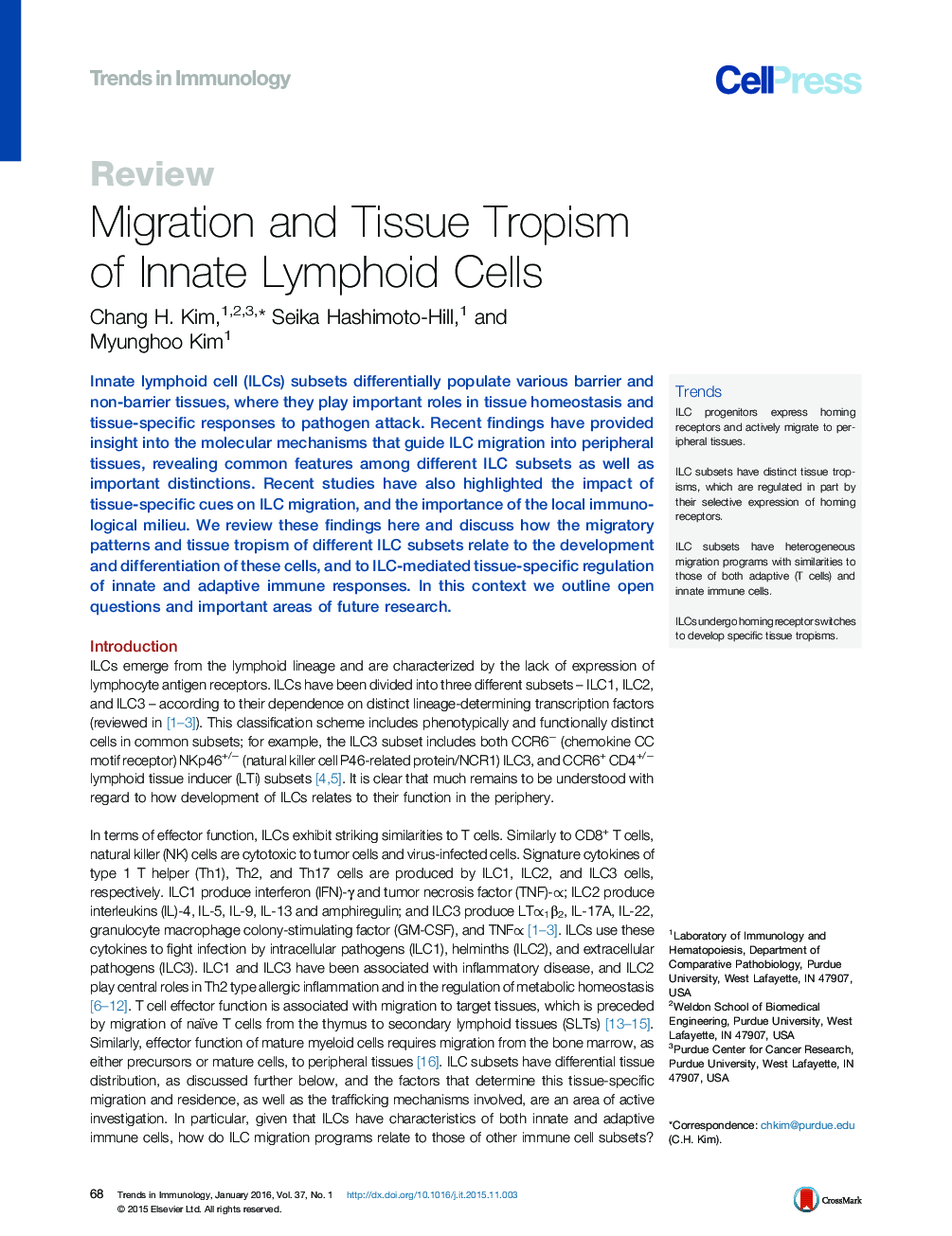| Article ID | Journal | Published Year | Pages | File Type |
|---|---|---|---|---|
| 4359706 | Trends in Immunology | 2016 | 12 Pages |
Innate lymphoid cell (ILCs) subsets differentially populate various barrier and non-barrier tissues, where they play important roles in tissue homeostasis and tissue-specific responses to pathogen attack. Recent findings have provided insight into the molecular mechanisms that guide ILC migration into peripheral tissues, revealing common features among different ILC subsets as well as important distinctions. Recent studies have also highlighted the impact of tissue-specific cues on ILC migration, and the importance of the local immunological milieu. We review these findings here and discuss how the migratory patterns and tissue tropism of different ILC subsets relate to the development and differentiation of these cells, and to ILC-mediated tissue-specific regulation of innate and adaptive immune responses. In this context we outline open questions and important areas of future research.
TrendsILC progenitors express homing receptors and actively migrate to peripheral tissues.ILC subsets have distinct tissue tropisms, which are regulated in part by their selective expression of homing receptors.ILC subsets have heterogeneous migration programs with similarities to those of both adaptive (T cells) and innate immune cells.ILCs undergo homing receptor switches to develop specific tissue tropisms.
